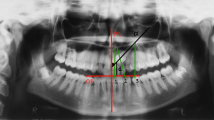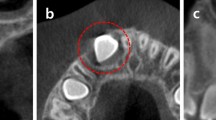Abstract
Data sources
PubMed, the Cochrane Library electronic databases and Scopus were searched.
Study selection
Randomised controlled trials (RCT), prospective and retrospective studies with untreated controls and clinical trials comparing at least two treatment strategies conducted in the mixed dentition with unilateral or bilateral PDC were included.
Data extraction and synthesis
Three reviewers selected and extracted the data independently and evaluated the quality of the studies. Inter-examiner reliability was measured using the intraclass correlation coefficient (ICC).
Results
Owing to heterogeneity in the study methods and unequivocal results, the scientific evidence was too weak to evaluate the effect of interceptive treatment on PDC or which treatment modalities are most effective. The quality of the studies is low due to inadequate sample selection and deficient description of sample size, confounding factors, uncertainty of randomisation and no blinding in measurements.
Conclusions
To obtain reliable scientific evidence as to whether interceptive treatment prevents impaction of PDC and which treatment modalities are the most effective, better controlled and well-designed RCTs are needed. Future studies should also include assessment of patient satisfaction and pain experience as well as analysis of the costs and side-effects of treatments.
Similar content being viewed by others
Log in or create a free account to read this content
Gain free access to this article, as well as selected content from this journal and more on nature.com
or
References
Kramer RM, Williams AC . The incidence of impacted teeth. A survey at Harlem Hospital. Oral Surg Oral Med Oral Path 1970; 29: 237–241.
Grover PS, Lorton L . The incidence of unerupted permanent teeth and related clinical cases. Oral Surg Oral Med Oral Pathol 1985; 59: 420–425.
Shafer WG, Hine MK, Levy BM . A textbook of oral pathology. 2nd ed. Philadelphia: WB Saunders, 1963.
Ericson S, Kurol J . Radiographic examination of ectopically erupting maxillary canines. Am J Orthod Dentofacial Orthop 1987; 91: 483–492.
Ericson S, Kurol J . Early treatment of palatally erupting maxillary canines by extraction of the primary canines. Eur J Orthod 1988; 10: 283–295.
Leonardi M, Armi P, Franchi L, Baccetti T . Two interceptive approaches to palatally displaced canines: a prospective longitudinal study. Angle Orthod 2004; 74: 581–586.
Baccetti T, Leonardi M, Armi P . A randomized clinical study of two interceptive approaches to palatally displaced canines. Eur J Orthod 2008; 30: 381–385.
Parkin N, Benson PE, Shah A . Extraction of primary (baby) teeth for unerupted palatally displaced permanent canine teeth in children. Cochrane Database Syst Rev. 2009, Issue 2.
Author information
Authors and Affiliations
Additional information
Address for correspondence: Dr. Julia Naoumova, Department of Orthodontics, Institute of Odontology at the Sahlgrenska Academy, University of Gothenburg, Göteborg, Sweden. E-mail: julia.naoumova@vgregion.se
Naoumova J, Kurol J, Kjellberg H. A systematic review of the interceptive treatment of palatally displaced maxillary canines. Eur J Orthod. 2011; 33: 143–149. Epub 2010 Jul 14. Review. PubMed PMID: 20631081.
Rights and permissions
About this article
Cite this article
O'Neill, J. Limited evidence for interceptive extraction of deciduous canines to prevent permanent canine impaction. Evid Based Dent 12, 106–107 (2011). https://doi.org/10.1038/sj.ebd.6400824
Published:
Issue date:
DOI: https://doi.org/10.1038/sj.ebd.6400824



